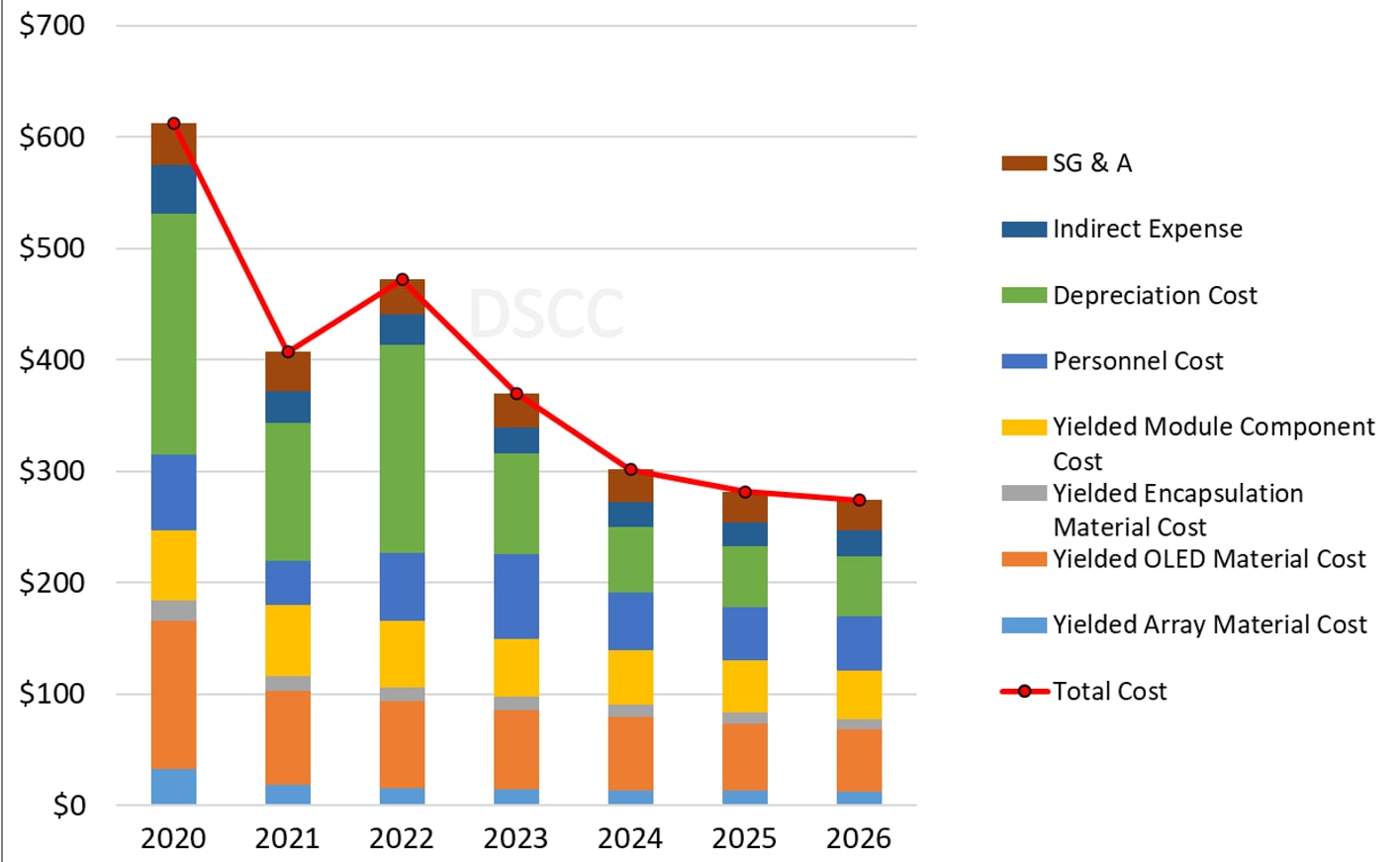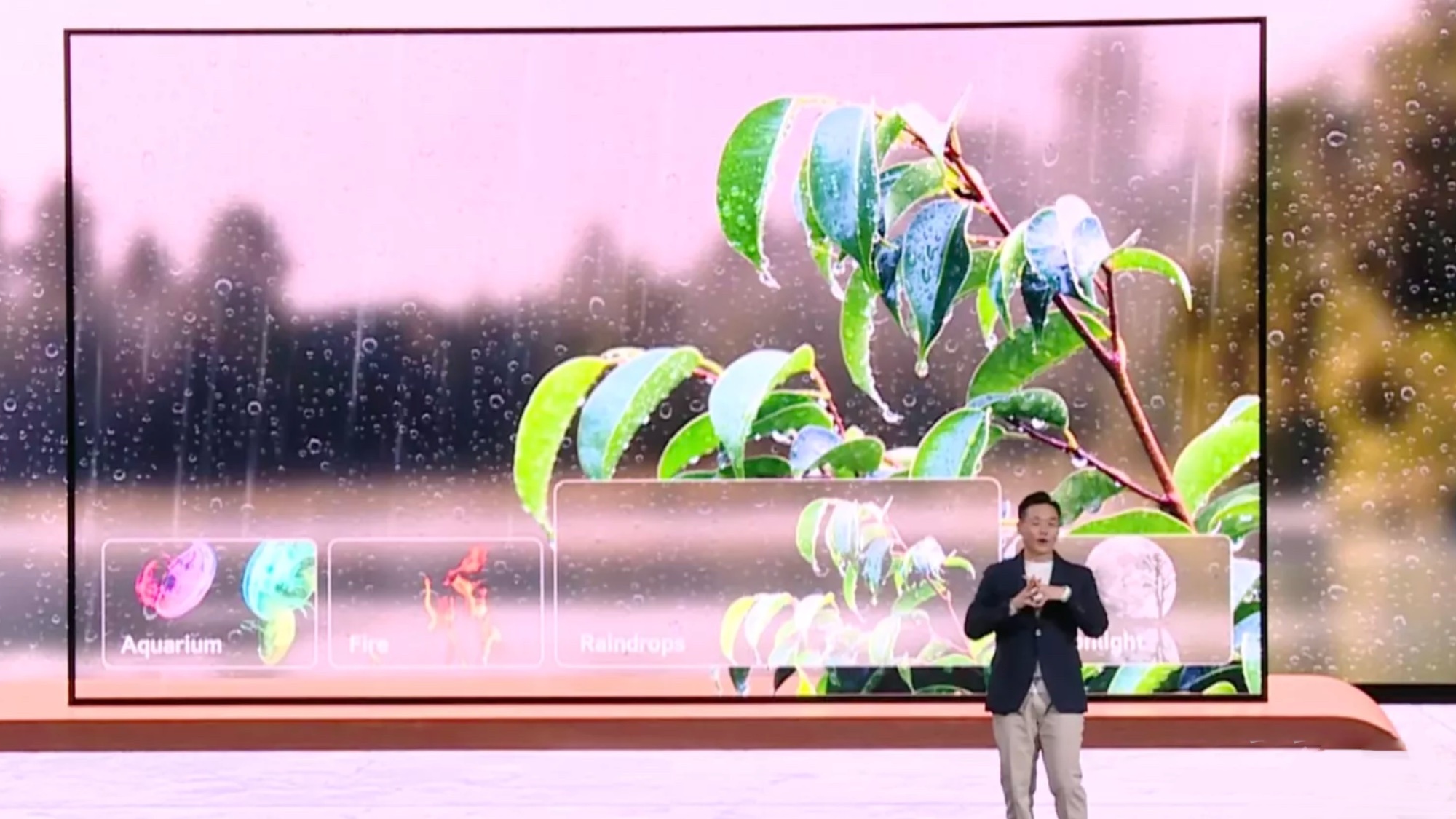
With CES 2024 now behind us, it’s clear that the major breadwinners in TV innovation were AI upgrades and transparent screens — but, in reality, who really needs all of that?
In an industry full of seemingly useless add-ons and features, now made even more convoluted through the likes of newfound AI enhancements, TVs are becoming ever-more expensive despite not really adding much to the user’s overall experience.
Transparent TVs from the likes of both LG and Samsung (the latter being all but a mere proof of concept) highlight in greater detail this focus on unnecessary innovation. While they do appear to be ingenious new ways for us to experience our daily entertainment needs, it will most assuredly come at an unobtainable price.
I don’t want to dogpile on these incredible new breakthroughs, but isn’t it about time we got cheaper OLEDs? It’s high time for a new breakthrough, one that will push OLED TVs into a new era of affordability.
Low-cost innovation is coming, but not soon enough
The average price of an OLED TV currently ranges between $1,000 to $2,000, making them quite an expense for mere entertainment purposes. They do offer a multitude of major benefits over their LED-LCD counterparts, namely energy efficiency, viewing angles, and thinner screens, but do these benefits really outweigh the insane costs?
In their defense, OLEDs have come down in price over the past few years, but you won’t be getting anything over 55 inches under a grand. Even our best cheap OLED TV deals is riddled with options well over $1,000, and the only one that’s even remotely budget is the 48-inch LG A2 OLED at $600. That’s certainly a great price, but not a good starting point for OLED buyers (and it’s a Best Buy exclusive, so you’re locked in there).
This past September, OLED TV revenues have dropped by 28% year over year, with unit sales declining by as much as 31%
DisplayDaily
And although OLED TV prices have dropped incrementally, it’s clearly not enough to sway buyers into the ecosystem. As reported by DisplayDaily this past September, OLED TV revenues have dropped by 28% year over year, with unit sales declining by as much as 31%. Additionally, DisplayDaily also found that OLED TVs comprised all but a mere 44% of the market in 2023, a surprising fall from 2022’s 51%.
Manufacturing definitely plays a bit into this premium barrier, as OLED panels have a higher cost for creation. A variety of rare earth materials are needed to develop the OLED panel’s organic layers, alongside both a substrate and anode, all of which don’t exactly come cheap.
Still, even manufacturing woes have slowly diminished over time, best presented via DSCC in its Biannual Advanced TV Display Cost Report released in May last year. Despite being almost a year old, the data provided shows the ever-depreciating production costs on a variety of different OLED panels, including WOLED and QD-OLED, from 2022 to 2026.

According to this data, average WOLED panel manufacturing costs in 2023 stuck to a little under $400, while QD-OLEDs were a bit more stagnant, hitting an average fabrication price of about $700. Although QD-OLED manufacturing costs aren’t predicted to change all that much by 2026, WOLEDs on the other hand are slated to hit an average production cost of under $300.
There are some new breakthroughs in panel manufacturing technology, as seen with potentially leveraging MnBz crystals or QDEL screens. However, these new display tech options are still several years away before reaching consumers — that is, if they even prove to be viable replacements.
For now, sadly, all we have to work with is the OLED TVs we know (and love) as new variations and lower-cost models are still out of reach. That wouldn't be such a problem, however, with incredible new chipsets and wide-sweeping features, these TVs are proving to become ever-more out of reach despite production costs seemingly dwindling year over year.
Transparent TVs and AI are no substitute for cheaper OLED options

As display companies tout major new breakthroughs in performance and picture clarity thanks to revolutionary AI chipsets, these changes don't do much for anyone who wants a more affordable OLED TV. Admittedly, while we don’t yet have a clear picture on what the 2024 OLED TV market looks like price-wise, it seems unlikely that we'll see many new models under $1,000.
AI improvements aren't the only big things coming from companies like LG and Samsung. At CES, both manufacturers also highlighted exciting new transparent OLED TVs with loads of supposed potential. LG’s display, in particular, is certainly a looker. Called the LG OLED T, the transparent TV is intended to allow users more freedom in where they place the screen.
Additionally, the transparent layer acts as a pseudo-3D effect for those who may want to watch Mariah Carey live literally right in front of them. Beyond these particulars, though, there doesn’t seem to be any real added benefit for owning or using a transparent TV. Plus, while price is still to be determined, the OLED T will most certainly fetch for an incredibly high premium (certainly well over $20,000).
Instead, major RND efforts should have been focused on bringing better OLED TV options to buyers within a smaller price bracket. General TV buyers aren’t picking up a new display for over $1,000, they typically wait for one to go on sale or just pick up the next best option at or around $500.
With only a few more months ahead before major manufacturers begin to announce their new lineup prices, I can only hope that some take into consideration this necessity to meet buyers at their best spending potential.
At least the LG B4 OLED looks like it will be an affordable option for folks who don't want to overspend.
Last year, LG gained immense kudos thanks to its powerful (and beloved) C3 OLED, a superb OLED TV model at just a little over $1,000. It’s unclear where exactly it’s newest C4 OLED will land price-wise, but I’m really hoping LG considers keeping prices low to increase OLED’s reach in the market. At least the LG B4 OLED looks like it will be an affordable option for folks who don't want to overspend. (See: LG C4 OLED vs B4 OLED: Which OLED TV should you buy in 2024?)
As I see it, OLED TVs offer an improved viewing experience, but there just aren't many good reasons for someone to shell out several thousands for a more expensive OLED that's so gimmicky.
It’s an interesting paradigm, as OLED screens continue to show up more frequently in our daily lives in products like the Nintendo Switch, iPads, and even smartphones, OLED TV manufacturers haven't yet found a way to bring down costs for larger sizes.
I don’t buy it…and maybe neither should you.







